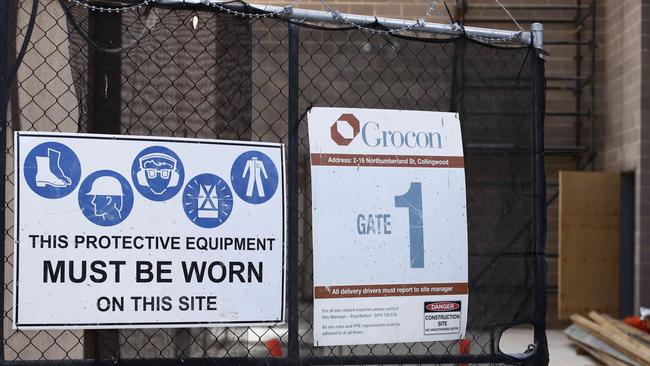Why the collapse of building companies a is wake-up call to private credit investors

With our own construction industry grappling with challenges and vulnerabilities highlighted by a wave of recent high-profile collapses, investors – especially private credit investors – need to sit up, pay attention and make some decisions.
Australia’s construction industry has been under siege since Covid-19, battered by a confluence of rising material costs, labour shortages, supply chain disruptions and the lingering effects of fixed-price contracts signed since the pandemic. These pressures have driven a record number of company failures, with more than 2140 construction firms entering external administration between July 2023 and March 2024 alone, according to KPMG data. High-profile names have collapsed, including Grocon, St Hilliers, ProBuild, Porter Davis, Millbrook Homes and Bentley Homes, with many citing rising costs, fixed-priced contracts and labour shortages as primary reasons.
On February 6 this year, NSW Central Coast-based Clarke Homes reportedly entered administration, citing rising material and labour costs. This left behind $3.1m in debt, unfinished homes, and more than 100 creditors.
The collapse follows a pattern that has left thousands of projects stalled and creditors out of pocket.
Private credit fund managers, who have increasingly filled the financing gap left by traditional banks, have been hit by these collapses. Just as there are riskier and safer stocks listed on the stockmarket, there are also riskier and safer private credit funds.
Like banks, some private credit operators secure their loans with tangible assets, while others frequently extend unsecured or mezzanine debt to construction firms, promising higher returns by betting on the ability of the construction firm to complete projects and generate returns. When these companies fail, the fallout is severe: unsecured creditors, including private credit investors, may recover very little.
Highlighting the domino effect on smaller operators and their financiers, the Clarke Homes debacle reportedly left a subcontracted builder $60,000 out of pocket, sending their business to the brink of collapse. Similarly, Porter Davis’s collapse left more than 1000 unsecured creditors owed a collective $71m, with private credit funds among those exposed.
According to Equifax data from the 2024 third quarter, 85 per cent of unsecured creditors in construction insolvencies receive no repayment.
It’s risk and return

Private credit’s appeal – higher yields in a low-interest-rate environment – has drawn institutional investors such as pension funds and high-net-worth individuals into the sector. But the construction crisis reveals the downside: illiquid investments tied to a volatile industry can evaporate overnight. The International Monetary Fund noted in 2024 that private credit assets, while stable in valuation due to infrequent assessments, carry risks when tied to sectors such as construction, where defaults can cascade through interconnected portfolios.
Investors must understand the contents of the loan portfolios they are lending into when they invest in a private credit fund. And many investors are clearly doing so, choosing to take an arguably more conservative route by investing in those private credit funds that eschew lending to construction projects. While the returns are likely to be lower – closer to 7 per cent than the mid-teens offered by construction lenders – the risk is also reduced or removed.
The parallels with the US are striking. In the US, rising costs and shrinking margins threaten builders, with tariffs and high mortgage rates now exacerbating the strain. In Australia, the Reserve Bank’s interest rate rises – from 0.1 per cent in 2022 to 4.35 per cent by 2024 – have squeezed builders locked into unprofitable contracts.
For private credit investors, Australia’s construction crisis is a wake-up call. The sector’s thin margins, susceptibility to external shocks, and reliance on debt make it a precarious bet in today’s climate. While some funds tout their ability to manage risk through diversification or hands-on oversight (a common feature of private equity-linked credit funds, according to the Reserve Bank’s October 2024 bulletin), mounting experience may yet prove otherwise. When construction firms fail, the losses are swift and unforgiving.
Investors should reassess their exposure. Funds with no ties to construction at least shield portfolios from the construction sector’s volatility. Alternatively, for those already invested, non-construction-linked private credit could serve as a diversification tool.
Investors need to be discerning and understand what they’re buying at all times. The regulatory framework prioritises disclosure; the information is there if you look for it. And the key is caution; in a market where builders have been folding at a rate of up to eight a day, the risk-reward calculus is shifting.
Private credit funds free of construction entanglements may be the smarter choice.
Roger Montgomery is founder and chief investment manager at Montgomery Investment Management





If you haven’t noticed, the US construction sector is that economy’s wildcard, and it’s sounding an alarm bell that can be heard across the Pacific all the way to Australia.